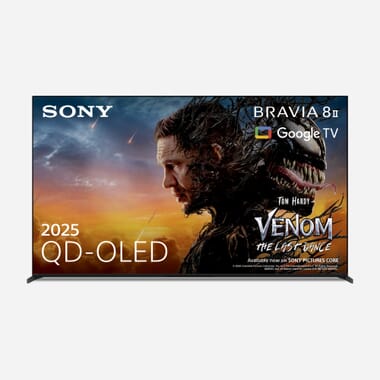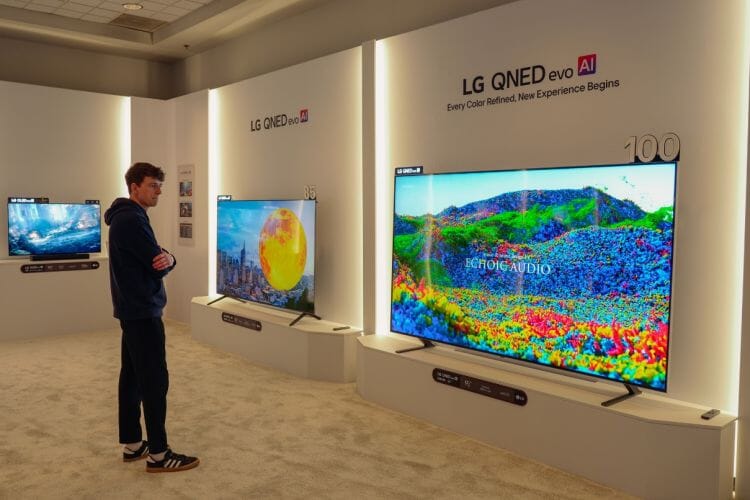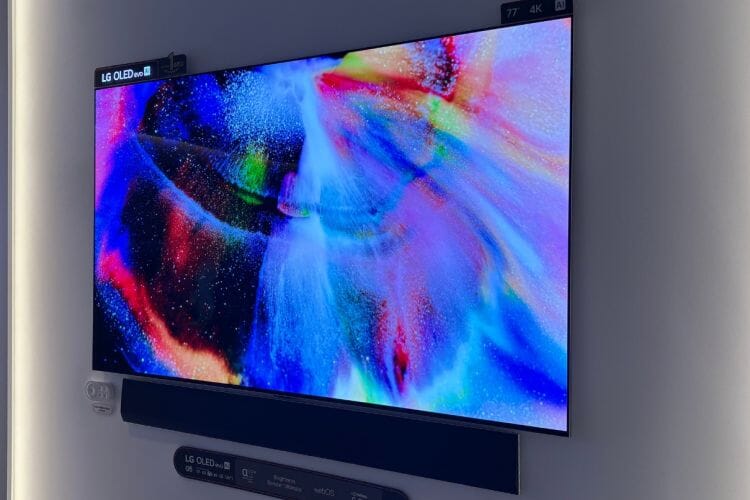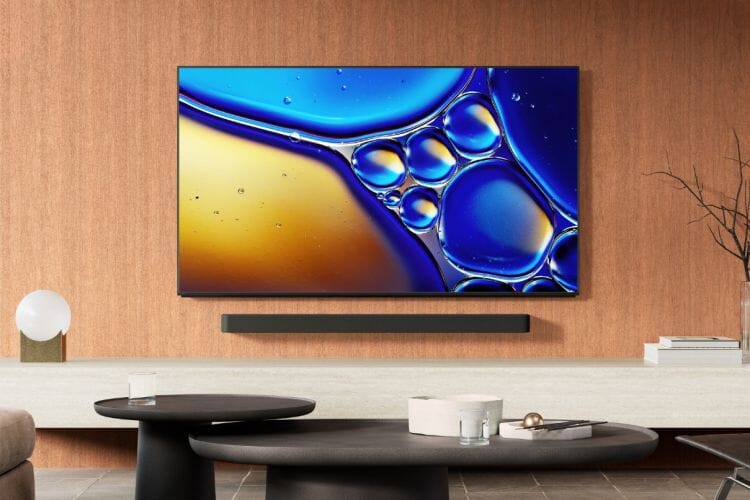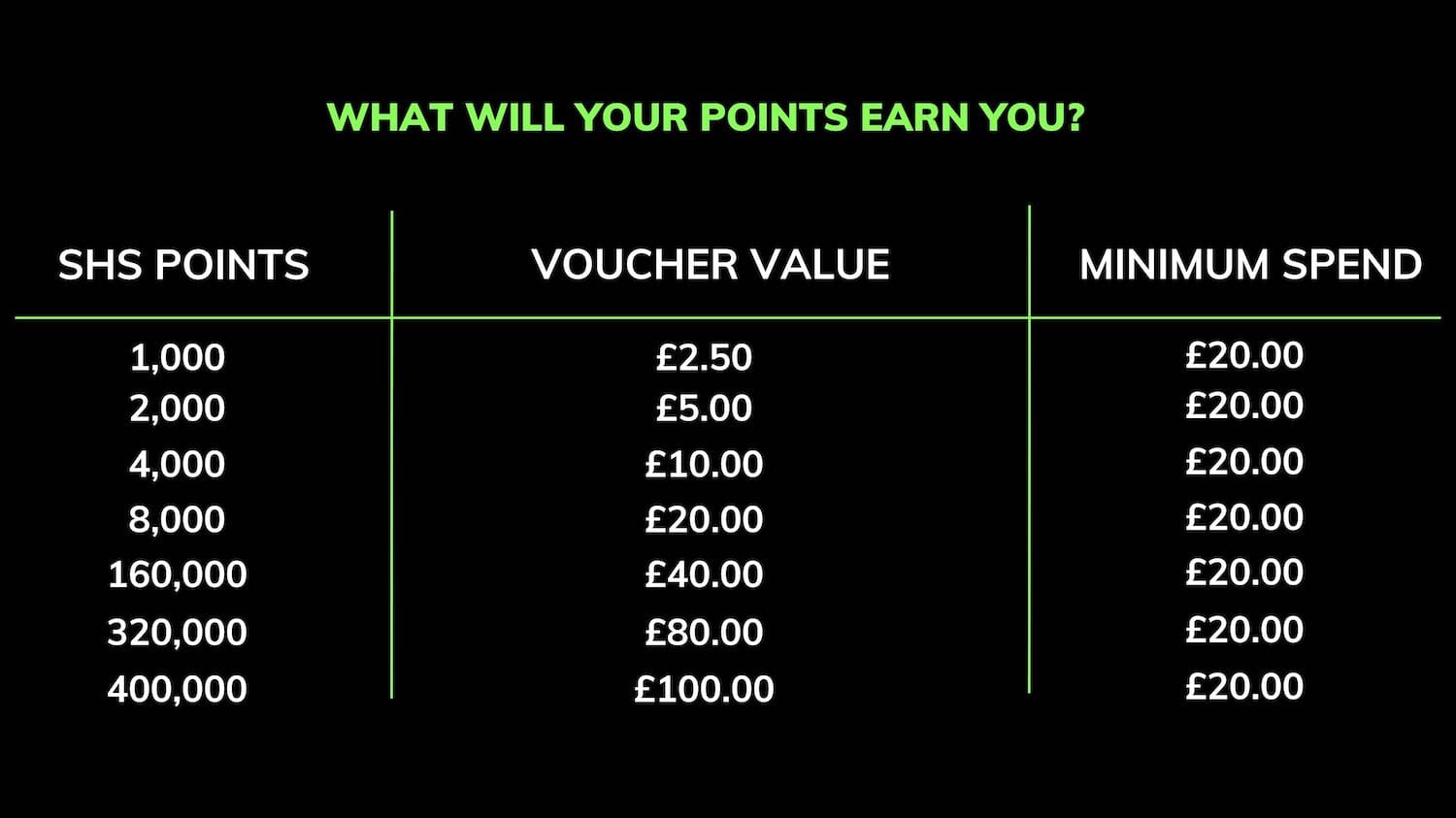Is the Sony Bravia 8 II the best OLED in 2025? Hands-on Review
Sony's 2025 TV lineup brings a new OLED flagship, the Sony Bravia 8 II. On paper, the name might suggest a small update to last year’s Bravia 8, but make no mistake: the Bravia 8 II is in fact replacing the A95L, Sony’s top-tier QD-OLED, and is now the brand's flagship OLED TV for 2025.
Beneath the sleek design, the Bravia 8 II packs a new generation QD-OLED panel that promises a noticeable boost in brightness. While competitors like Panasonic and LG are chasing headlines with new panel technologies, Sony is doubling down on what it does best, perfecting its QD-OLED formula for a more cinematic experience.
The question is, in a year where brightness is the big talking point, will Sony’s approach still stand out? We’ve put the Bravia 8 II to the test to find out...
Sony Bravia 8 II Review: SHS 60-Second Summary: RRP: £2,499 (55”), £2,999 (65”) See Latest Pricing The Sony Bravia 8 II replaces the award-winning A95L as Sony’s flagship OLED, but you wouldn’t know it from the name. While the badge says “Bravia 8 II,” this is no minor refresh. It features Sony’s latest XR Processor, a new AI Scene Recognition system, and the same new 3rd-gen QD-OLED panel used in the Samsung S95F, delivering Sony’s brightest OLED performance to date. While it might not reach the raw brightness levels of rivals like the LG G5 or Samsung S95F, that’s not what this TV is about. Sony has focused on cinematic accuracy, and it pays off. Colours stay true, motion remains smooth, and the picture feels beautifully refined. For film lovers who value a natural, movie-like image, the Bravia 8 II delivers in spades. 👉 For more detail, check out our full YouTube review here: Sony Bravia 8 II Review | |
| Pros: ✓ Excellent colour accuracy and natural image quality ✓ 25% brighter than A95L ✓ AI scene recognition delivers great results ✓ Dolby Vision, Netflix Calibrated Mode, Google TV OS ✓ Premium design and solid audio system | Cons: ✖ No support for HDR10+ ✖ Only two HDMI 2.1 ports ✖ Blacks appear lifted in bright rooms ✖ Limited size options (only 55" and 65" at launch) |
Sony Bravia 8 II Review: Pricing & Availability

While the Sony Bravia 8 II steps in to replace the outgoing A95L, this time, Sony is shaking things up with a far more competitive price point. In fact, it's priced much more aggressively and could put real pressure on rivals like LG and Samsung. Traditionally, Sony's flagship OLEDs have carried a premium over the competition, but the Bravia 8 II marks a notable change in strategy.
The 55" Bravia 8 II has an RRP of £2,500, considerably lower than the £3,000 launch price of the 55" A95L. The 65" version of the Bravia 8 II is set to launch at £3,000, lower than the 65" LG G5 which has an RRP of £3,299.
Sony Bravia 8 II vs A95L: What’s Different?

The Bravia 8 II builds on the strong foundation of the A95L with a series of notable upgrades. Here's how they compare:
- Brighter QD-OLED Panel: The Bravia 8 II is supposedly 25% brighter than the A95L, thanks to a more efficient generation of QD-OLED technology. It also delivers a 50% brightness boost over the Bravia 8 WOLED, making it a substantial leap forward in overall luminance.
- Refreshed Picture Processing: While still powered by the XR Processor, the 8 II introduces AI Scene Recognition for more precise real-time optimisation of picture content.
- No 77” Version (Yet): Unlike the A95L, the Bravia 8 II launches only in 55” and 65”. The 77” A95L remains in the lineup for large screen shoppers—for now.
- More Competitive Price: Despite the upgrades, the Bravia 8 II comes in at a lower launch price than the A95L. The 55” and 65” variants both undercut their A95L equivalents, offering greater value at the flagship level
Overall, the Bravia 8 II improves on the A95L in key areas while bringing flagship OLED performance to a slightly more accessible price point.
Want to see how this actually plays out on screen? Jump to our Picture Quality Comparison below...
Sony Bravia 8 II Review: Design & Build Quality
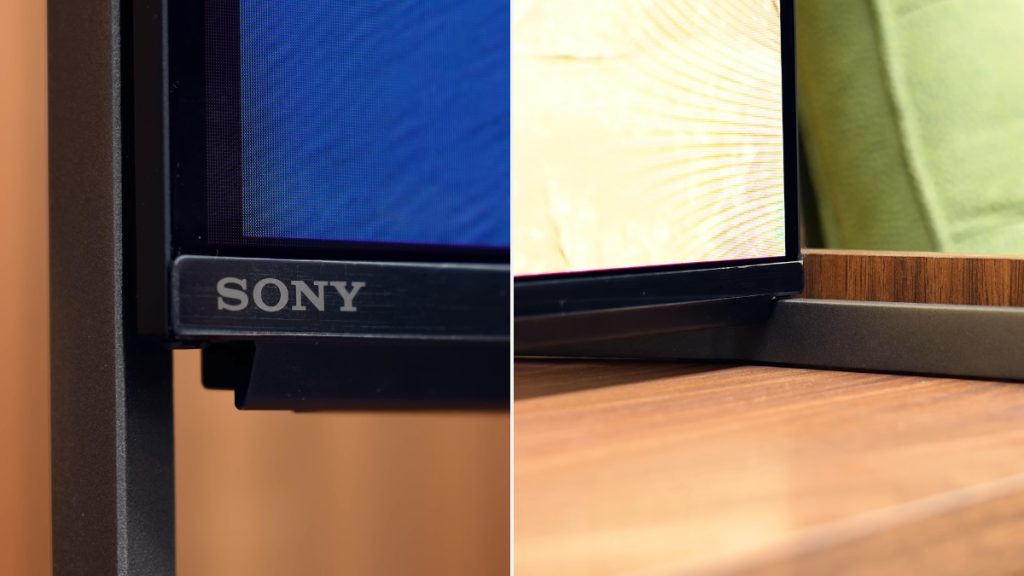
At first glance, the Bravia 8 II looks very similar to the A95L, and that’s no bad thing. Sony has stuck with the sleek, minimalist styling we loved about the previous version, reusing much of the same chassis to keep the build quality impressive while being able to offer the new model at a more competitive price.
The slim bezels and premium aluminium frame give it a high-end feel that blends effortlessly into any living space.And the two-position stand allows you to raise the screen slightly to fit a soundbar neatly underneath.
At 34mm deep, it isn’t the slimmest OLED on the market, but the added depth partly comes from Sony’s actuator-based sound system and custom heatsink, both of which enhance performance. Even so, it still looks elegant when wall-mounted.
Sony has also introduced its new 2025 remote with this model. It’s small and more eco-friendly, but it does miss out on backlighting and feels a little less premium than some of Sony’s older remotes.
Sony Bravia 8 II Review: Features
As for smart features, the Bravia 8 II runs on Google TV OS, which in my opinion is still the best TV operating system out there. It’s clean, fast, and makes it easy to find your content or jump straight into the settings when you need to.
Format support is exactly what you’d expect from a Sony flagship. You’ve got Dolby Vision, Dolby Atmos, IMAX Enhanced, HDR10, and HLG all on board. The only thing missing is HDR10+, which, as usual for Sony, isn’t supported.
Sony Bravia 8 II Review: Picture Quality

We’ve tested the Bravia 8 II with a huge mix of content, both in our darker film studio and our light, bright showroom. We’ve also lined it up against the A95L to see what’s changed, and put it side by side with the LG G5 and Samsung S95F for context. Here’s a quick breakdown of what stood out during our testing:
| Sony Bravia 8 II Review: Picture Quality Breakdown |
|---|
| ✅ Superb out-of-the-box accuracy with natural, cinematic colour ✅ Excellent shadow detail and smooth motion ✅ Dolby Vision looks fantastic with great highlight control ✅ Panel uniformity is excellent with no visible banding ✅ Upscaling remains one of Sony’s strongest features |
| ❌ SDR performance is flatter than expected, with lifted blacks in bright rooms ❌ Lacks the brightness punch of LG G5 and Samsung S95F |
In general viewing, the Bravia 8 II delivers exactly what we’d expect from a Sony flagship OLED: a cinematic, well-balanced picture that’s easy to watch. Out of the box, it looks superb. Colours are vibrant without being overdone, motion is excellent, and clarity is spot on.
One of its biggest strengths is how little effort it takes to get it looking great. Professional Mode was our go-to for testing, while Cinema Mode adds a touch more brightness if you want it. Standard Mode, for our eyes, leans a bit cool, but the presets make it simple to find what suits you. Our review sample also showed excellent panel uniformity, with no signs of banding.
Dolby Vision & HDR Performance
In Dolby Vision, the Bravia 8 II really plays to its strengths. Dolby Vision Dark looks brilliant in a dim room, while Dolby Vision Bright gives you that extra lift for daytime viewing. Colours remain natural, highlights have real impact, and the TV does an impressive job of holding onto detail at both extremes, which isn’t easy to do.
HDR performance follows a similar pattern. It’s strong and cinematic, but compared to LG’s G5 and Samsung’s S95F, it lacks some of that immediate punch.
SDR is where things slip a little. Compared to HDR, and even the A95L, SDR content on the Bravia 8 II can look flatter than expected. In brighter rooms, blacks lift to a grey tone and the image loses some depth. So, if you watch a lot of standard HD content, this might be something to consider.
Bright vs. Dark Room Performance
In a dark room, the Bravia 8 II really comes into its own. Dolby Vision content looks impressive, with colours that feel natural and highlights that have just the right amount of pop.
When we compared it to the LG G5 and Samsung S95F in the same setting, those TVs were definitely brighter, but at times they almost felt too intense, even distracting. The Sony’s picture just feels easier on the eyes and more film-likein our opinion.
Things flip when we moved into our bright showroom. Admittedly, this space is packed with windows and skylights (pretty much the worst environment for any OLED). But here, the LG and Samsung models held onto their brightness much better, while the Bravia 8 II starts to look a bit flat.
On the plus side, reflections were handled better than on the A95L, which tells us Sony has improved this model’s anti-reflective coating. That said, this coating might also be why those blacks look a little greyer in bright light.
Sony Bravia 8 II vs Sony A95L
Generally speaking, side by side with the Sony A95L, the Bravia 8 II feels more like a refinement than a serious upgrade. But that probably says more about how good the A95L was rather than highlighting any real shortcomings here.
Sony has kept everything we loved about the A95L: accurate picture, excellent upscaling, great off-axis viewing angles, and that well-balanced, cinematic image. But there’s no huge leap forward in any one area.
For Dolby Vision and HDR content, the two are very close in performance, and in day-to-day viewing, we couldn’t really pick out much difference between them.
If you’re watching more critically, you can spot that the Bravia 8 II is capable of slightly brighter highlights and a touch more vibrancy in high-nit content. Sony claims a 25% step up in brightness, and while we’re not convinced that fully translates to real-world viewing, those improvements are there if you look for them.
Read More: Sony A95L Review: Is it Worth It in 2025?
Sony Bravia 8 II vs. Samsung S95F vs. LG G5

o, how does the Bravia 8 II hold up against its biggest rivals? When it comes to brightness, the LG G5 takes the crown. With its new Primary RGB Tandem OLED panel, it delivers some seriously impressive brightness levels.
It’s the kind of TV that grabs your attention the second you see it, and in our testing, it clearly outperformed the Bravia 8 II in that department.
What caught us off guard was the Samsung S95F. It uses the same latest-gen QD-OLED panel as the Sony, so we expected them to be closer, but the Samsung looked noticeably brighter.
This seems to come down to picture tuning. Sony aims for a more natural, balanced image, while Samsung pushes harder with tone mapping to make everything pop. The trade-off is that the S95F can sometimes look overcooked, with colours edging into unrealistic territory and blacks that almost crush out fine details.
The key thing to remember is that brightness isn’t always better, and the Bravia 8 II proves that by keeping things more accurate and cinematic.
We’ve still got more testing to do with the Samsung in our studio, and we’ll cover that fully in our upcoming head-to-head. For now, if you want maximum brightness, go LG or Samsung. If you prefer something more natural and film-like, the Sony is the one to go for.
Sony Bravia 8 II Review: Sound Performance
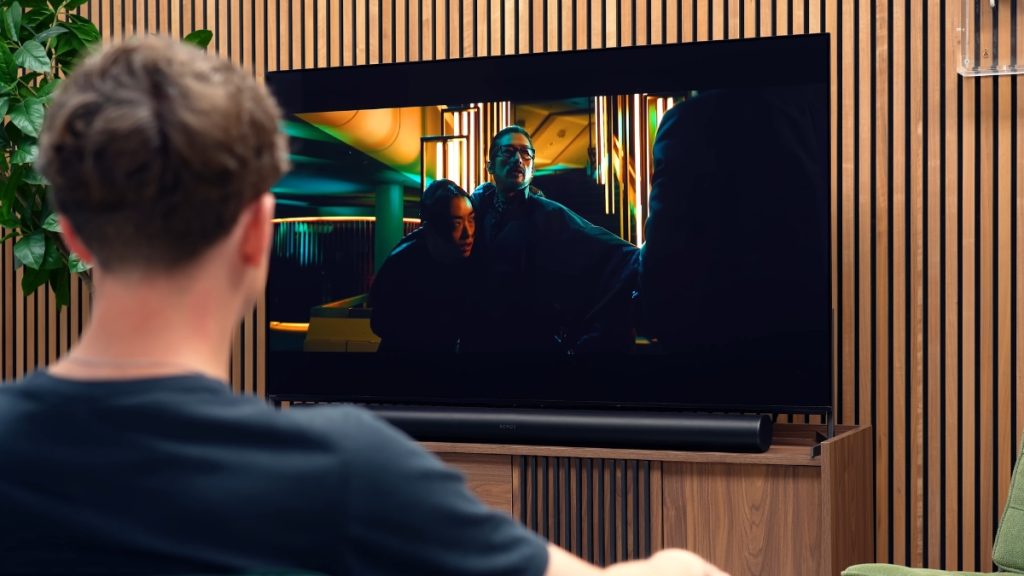
We don’t usually spend too much time on TV sound, especially at this level, because we’d always recommend pairing a flagship TV with a good soundbar or home cinema setup to do the picture justice. For some of our testing, we used the Sonos Arc Ultra, which elevated the experience even further.
That said, the Bravia 8 II holds its own better than most TVs. It uses the same Acoustic Surface Audio+ system as the A95L, with two actuators and two subwoofers behind the screen for a 2.2-channel setup.
The actuators vibrate the panel to produce sound directly from the screen, helping to anchor dialogue to the action and adding a sense of immersion. Vocals are clear, and the overall sound is fuller than expected from built-in speakers.
We would still like to hear more weight and impact, so for the best experience, a soundbar is worth adding. Sony’s Theatre Bar 8 is a great match, supporting Acoustic Centre Sync to work seamlessly with this TV.
Sony Bravia 8 II Review: Gaming Performance
When it comes to gaming, the Bravia 8 II is great, but not quite excellent. There’s not a lot of change here from the A95L. You still get 4K at 120Hz, VRR, ALLM, and Dolby Vision Game Mode.
Being a Sony, you also get Perfect for PS5 functionality and the option to use Remote Play with other TVs in your home, which is handy if you don’t want to move your console between rooms.
The downside is that there are still only two HDMI 2.1 ports, and one of those is your eARC port. So, if you have a soundbar and two game consoles, you’ll be swapping cables. It’s not a deal breaker, but it’s not ideal either.
Also, 120Hz is starting to feel a little behind the curve, with many TVs now offering 144Hz or even 165Hz. Either Sony is a step behind here, or they’re confident that most users won’t need those extras.
Our Verdict: Should You Buy the Sony Bravia 8 II?
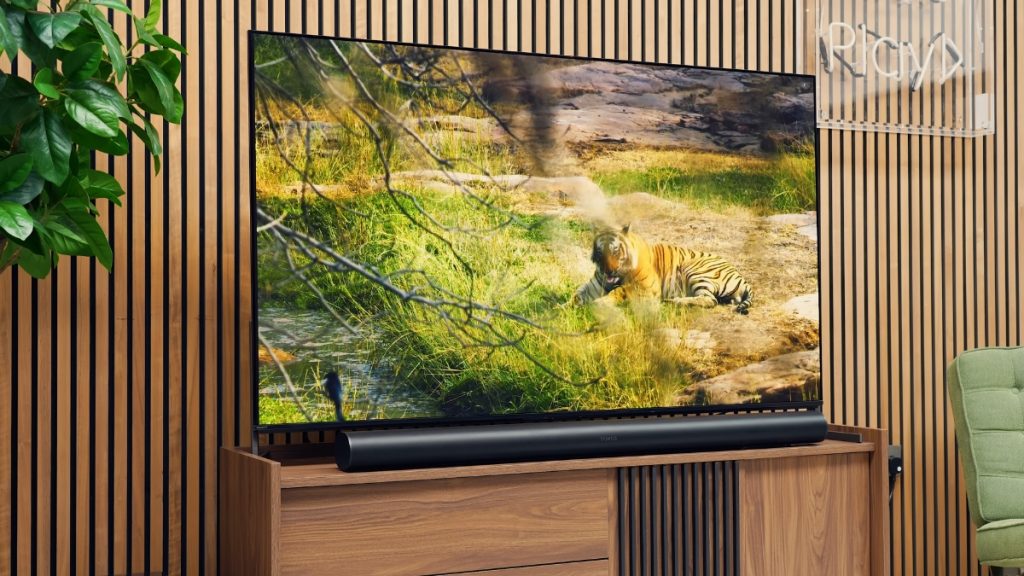
For us, the Sony Bravia 8 II is one of the standout OLEDs of 2025 if you value refinement and cinematic precision over headline specs.
With Dolby Vision content, it holds its own against some of the best, and while it can’t match the raw brightness of LG’s G5 or Samsung’s S95F, its natural, accurate picture will be equally appealing to the right person.
If you mainly watch in bright spaces, rely on SDR content, or want the very latest gaming features, there are better options. But for film lovers who prioritise accuracy and realism, this TV is an easy recommendation.
Against the A95L, the brightness bump is noticeable but not dramatic. That said, with its polished performance and more competitive launch price, the Bravia 8 II feels like one of the most well-rounded OLEDs you can buy this year.
For more, keep an eye on our Blog & YouTube Channel for detailed reviews and comparisons, coming your way soon!
Where Does the Sony Bravia 8 II Sit in the 2025 Sony Range?

For those interested, the Bravia 8 II sits comfortably in the upper tier of Sony’s 2025 TV lineup, as their flagship OLED model.
The only model that sits above the Bravia 8 II is the Bravia 9, Sony’s brightest 4K Mini LED TV yet, positioned as the top-tier choice for those prioritising peak brightness and Mini LED tech over OLED.
Here's a quick rundown of the entire range:
- Bravia 9 – Flagship Mini LED: Sony’s brightest 4K TV
- Bravia 8 II – New flagship QD-OLED replacing the A95L
- Bravia 8 – Carryover WOLED model: More affordable OLED option
- A90K – Compact OLED: Ideal for smaller spaces
- Bravia 7 – Carryover Premium Mini LED model
- Bravia 5 – New entry-level Mini LED: Replaces X90L
- X85L – Carryover mid-range LED: Solid LED TV
- Bravia 3 – New LED entry-level option
Check out our Sony 2025 TV Range Buying Guide for a full breakdown of how each model stacks up.
Sony Bravia 8 II FAQs
Is the Sony Bravia 8 II better than the A95L?
The Bravia 8 II is more of a refinement than a huge upgrade over the A95L. Sony claims a 25% brightness boost, and while that’s noticeable in certain scenes with high-nit content, it’s not a dramatic leap in day-to-day viewing. Colour performance is slightly improved, and it launches at a lower price point, but the two TVs remain very close in overall quality.
Does the Sony Bravia 8 II support Dolby Vision and Atmos?
Yes. The Bravia 8 II supports Dolby Vision and Dolby Atmos. Like other Sony TVs, it does not support HDR10+, which may matter if you use services that rely on that format.
What sizes is the Bravia 8 II available in?
At launch, the Bravia 8 II is available in 55-inch and 65-inch sizes. The 77-inch A95L remains in the lineup for those wanting a larger OLED option.
What’s the difference between the Bravia 8 and Bravia 8 II?
The original Bravia 8 uses a WOLED panel, while the Bravia 8 II steps up to a QD-OLED panel with more advanced processing. This upgrade gives the 8 II a noticeable boost in brightness and colour performance, although it’s not chasing extreme brightness like some rivals.
When did the Sony Bravia 8 II launch?
The Bravia 8 II launched on the 6th June 2025 in the UK and EU.
Other Useful Content
Blog: TV Buying Guide Everything You Need To Know
Blog: Sony Bravia 9 Review: The Right Choice in 2025?
Video: TV Panel Type Buying Guide: OLED vs QLED vs QNED vs Micro LED vs Mini LED & More
For more information about Sony TVs or any other TV products, get in touch and one of our Tech Guides would be happy to help!
| info@smarthomesounds.co.uk | |
| Live Chat on our Website | |
| 0800 677 1100 |
Why buy from Smart Home Sounds? We offer Lowest Price Guarantee, Free Next Day Delivery* and 0% Finance Available. Looking for more personal advice? Contact our team of experts today. Shop TV




